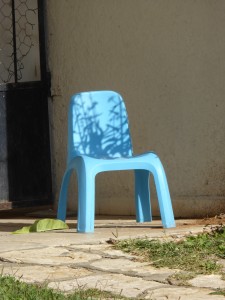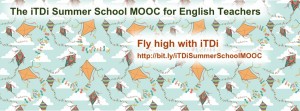
Naomi’s Photos
Incidental learning.
Sigh.
“Incidental learning” as in picking up vocabulary that wasn’t taught explicitly in class. Or an expansion of that – vocabulary items that were introduced in class, being reinforced in an unplanned manner outside the classroom walls.
“Incidental learning” as in the Deaf student who showed me the word “racist” in a comment on a website after the word “racism” was introduced while teaching the poem “As I grew older” by Langston Hughes. (Happy Teacher!) Or the Deaf student who worked on a text related to online shopping which included a reference to “Amazon”. She was sure it was a reference to the Amazon River, which she had learned about in Junior High School. No one in her family had ever ordered anything from Amazon and any casual conversations she might have encountered in the hallway or on the bus mentioning “Amazon” were not heard.
In short, Deaf / hard of hearing students need extra exposure to words in class. Repeated exposure to vocabulary items (mainly in written form!) in context and lots of practice!
With that in mind, I’ve been examining the Ministry of Education’s words list for high school students for ways to count and increase the number of times I use words from the list in context, in writing.

Naomi’s Photos
And I have formulated a plan.
Or at least a way to begin.
Refreshing a small unit I prepared from the elementary school vocabulary list (see below the horizontal lines) helped me decide what not to do for the high school students while sticking to a “re-entry plan”.
For the unit for elementary school, I chose a random set of 20 words and word-chunks from the list which I felt I was able to effectively place in a meaningful, visual context (I used two words not from the list as well). Then I created a visual lead-in activity (slideshow), a short film without dialogue that ties the items together, then the same film again with questions using the vocabulary items, ending with a Quizlet word set to practice with.
For the high school students, there is no need to choose a random set of words to begin with or to create the context. I already have a context that I spend a great deal of time teaching anyway – the pieces in the literature program.
Not only do I know exactly which pieces I will be teaching over the next three years, I also have no particular interest in creating activities that don’t tie in with the literature program and could take up time that I don’t have.

Naomi’s Photos
There are some vocabulary items on the list, such as the word “poverty”, that stand out. These are words which I will put under the category of Across The Board – words I can use in many (or even most!) of the poems and stories I teach. Roger and Mrs. Jones from “Thank You, Ma’am”, are poor, as are characters in “The Treasure of Lemon Brown” and “A Summer’s Reading”. The concept of poverty can also be related to poems such as “As I grew older” and “Count That Day Lost”. I’m keeping a special eye out for those words at the moment. I haven’t thought of a good title for the words that are relevant to only one piece yet…
So, what’s my first step?
I’m about to begin teaching the stories “Thank You Ma’am” by Langston Hughes and “A Summer’s Reading” by Bernard Malamud. I’ve started off by comparing the word list to the former story. Here are the “Across The Board” words that I have identified as relevant to this story:
poverty / trust* / to struggle* / to escape / an offence / an entrance / an exit / a promise / literature / racism / to steal / tone / setting / share / witness / to survive / theme / to threaten / in return for / the main thing / to blame / to bear in mind / youth / get away with / it resulted in
- Only “trust” and “to struggle” (out of the above list) are in the text of the story itself, though the word “escape” does come up frequently when discussing phrases such as “make a dash for it” that appear in the story. “Escape” is, naturally, also a very useful word when teaching a Summer’s Reading, but I’ll get to that story in another post.
- Madam / God / Kitchen – these words are both in the text and on the list, but are “story specific”.
The next step is to go over the questions, activities, and exercises I have for this story. I have begun checking which questions I would like to rephrase or change so as to ensure that the items from the above list will be used.
FOLLOW THIS SPACE!
The Egghunt
1) Here’s the list of vocabulary items FOR THE TEACHER:
| Egg | buy | Take care! | hungry |
| Caveman* | Hunt * | Be careful! | long |
| Spear* | fall | That’s not fair! | angry |
| film | smile | How many | sad |
| food | watch | sure | |
| another | break | true | |
| see |
2. Here is the lead-in activity for the students. It must be done BEFORE watching the film.
3) The animated film (no dialogue, remember?)
4) Questions related to the film embedded in the film, courtesy of Edpuzzle.
5) A set of the vocabulary items on Quizlet.com
http://quizlet.com/44000574/egghunt-vocabulary-flash-cards/









